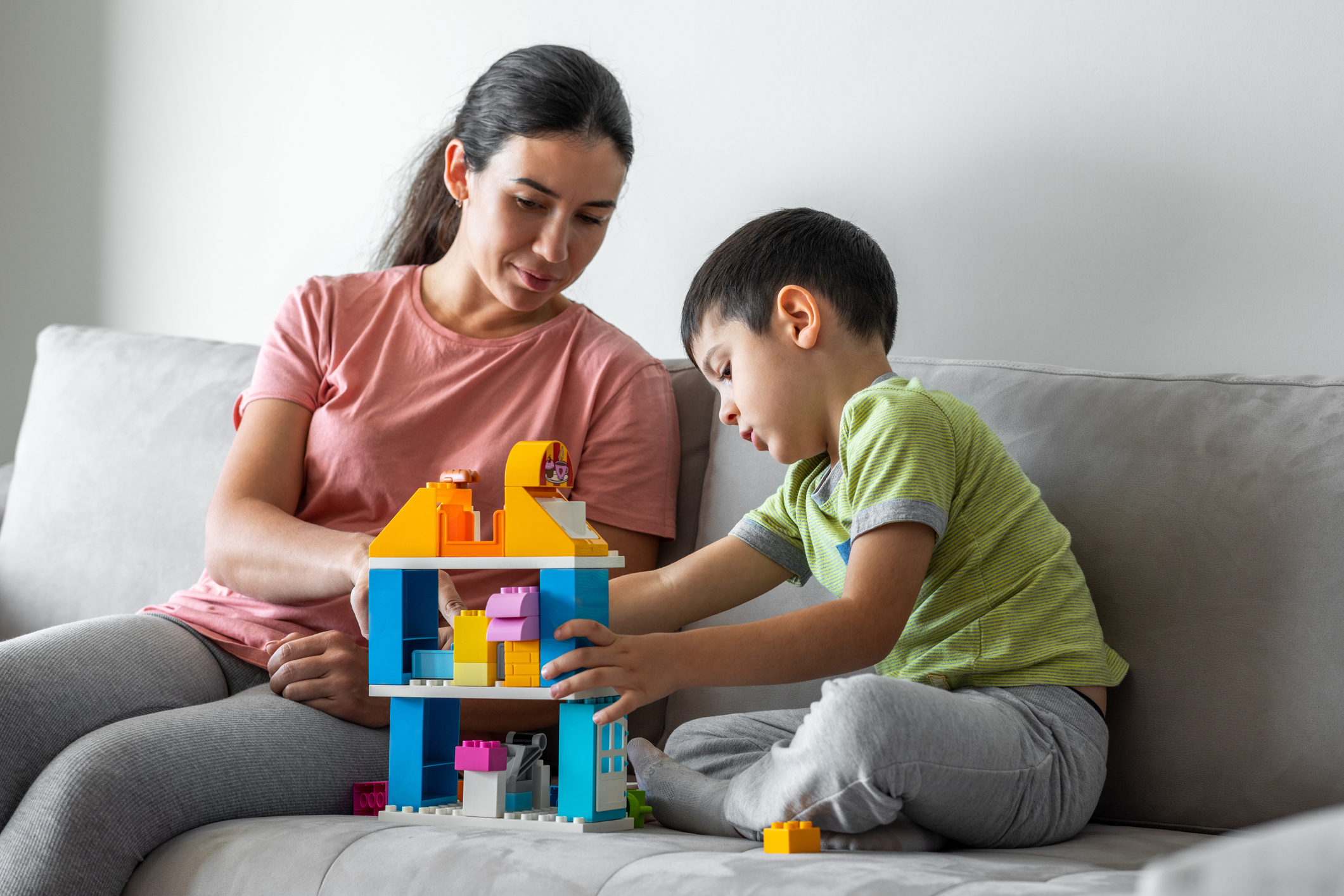Welcome to our blog post on promoting trust and security in residential care settings. In this article, we will explore practical approaches to building attachment with children who are in residential care.
Residential care plays a vital role in providing a safe and stable environment for children who are unable to live with their families. However, it is crucial to understand the importance of trust and security in these settings. When children feel safe, secure, and loved, they are more likely to develop healthy attachments and thrive emotionally, socially, and academically.
Building trust with children in residential care requires intentional efforts and a deep understanding of their unique needs. Consistency and reliability are key factors in establishing trust. Children need to know that their caregivers will be there for them consistently, providing the support and care they require. By being reliable and following through on promises and commitments, caregivers can demonstrate their trustworthiness to the children in their care.
Establishing boundaries and expectations is another essential aspect of building trust. Clear boundaries help children understand what is expected of them and create a sense of safety and predictability. By setting realistic expectations and consistently enforcing boundaries, caregivers can create an environment of trust and security for children in residential care.
Effective and patient communication is also crucial in promoting trust. Caregivers should listen attentively to children’s needs, concerns, and emotions, providing them with a safe space to express themselves. By demonstrating empathy, understanding, and patience, caregivers can foster a sense of trust and openness with the children in their care.
Promoting security for children in residential care goes hand in hand with building trust. Creating a safe and comfortable environment is paramount in ensuring their well-being. This involves maintaining a clean and organised living space, providing nutritious meals, and ensuring proper supervision and safety measures. By prioritizing their physical safety, caregivers can establish a sense of security for the children in their care.
Emotional security is equally important in residential care settings. Caregivers should strive to create an atmosphere of affirmation and validation, acknowledging children’s feelings and experiences. By offering praise, encouragement, and reassurance, caregivers can help children develop a positive self-image and build trust in their relationships.
Promoting social security is also crucial for children in residential care. Peer interaction and group activities provide opportunities for children to develop social skills, form friendships, and experience a sense of belonging. By facilitating positive social interactions and providing opportunities for shared experiences, caregivers can help children feel secure and connected within their residential care community.
Establishing healthy attachments is a foundational element in residential care settings. Understanding the role of attachment in child development is essential for caregivers. By recognizing the significance of secure attachments in promoting emotional well-being and healthy relationships, caregivers can prioritize attachment-focused practices in their interactions with children.
Practical strategies for facilitating attachment include creating a nurturing and responsive caregiving environment, engaging in play and positive interactions, and promoting moments of connection through shared activities. Caregiver self-care is also crucial in the attachment process, as caregivers must attend to their own emotional and physical needs to be fully present and available for the children in their care.
While building trust, security, and attachment is a rewarding journey, it can also present challenges. Children in residential care may exhibit resistance and withdrawal due to past traumas or attachment disruptions. Caregivers must approach these challenges with empathy, patience, and understanding, providing consistent support and creating opportunities for healing and growth.
Addressing past traumas and abuse requires specialized knowledge and expertise. Caregivers should work closely with professionals, such as therapists and counsellors, to provide the necessary therapeutic support for children in their care.
Building resilience is essential in navigating setbacks and challenges. Caregivers must be prepared to adapt their approach and seek additional support when needed. By fostering resilience in both themselves and the children in their care, caregivers can overcome obstacles and continue to promote trust, security, and healthy attachments.
In the following sections of this blog post, we will delve deeper into each of these topics, discussing practical strategies and offering insights from experts in the field. Stay tuned for valuable information and actionable tips on promoting trust and security in residential care, and building strong attachments with the children in your care.
Understanding the Importance of Trust and Security in Residential Care
Trust and security are fundamental pillars of providing effective care for children in residential settings. Understanding the importance of trust and security is essential for caregivers to create a nurturing environment where children can thrive emotionally, socially, and academically.
- The Impact of Trust: Trust forms the foundation of any healthy relationship, and it plays a crucial role in the development of children in residential care. When children feel secure and trust their caregivers, they are more likely to form positive attachments, express their emotions, and seek support when needed.
- Emotional Safety: Trust and security contribute to the emotional safety of children in residential care. Emotional safety allows children to feel comfortable expressing their feelings and thoughts without fear of judgment, rejection, or harm. It provides a sense of stability and promotes healthy emotional development.
- Stability and Predictability: Trust and security create a stable and predictable environment for children in residential care. Consistent routines, clear expectations, and reliable caregivers help children feel safe and reduce anxiety. This stability allows children to focus on their growth, development, and healing.
- Building Resilience: Trust and security are vital for building resilience in children. When children feel safe and supported, they are more likely to develop coping skills, adapt to changes, and bounce back from adversity. Trust and security provide a solid foundation for children to develop resilience and thrive in the face of challenges.
- Impact on Overall Well-being: Trust and security significantly impact the overall well-being of children in residential care. When children feel secure and trust their caregivers, they experience improved mental health, better self-esteem, and enhanced social skills. Trust and security contribute to the holistic development of children and lay the groundwork for their future success.
- Long-term Effects: The importance of trust and security extends beyond the immediate residential care experience. Children who develop secure attachments and experience a sense of trust and security are more likely to form healthy relationships in the future, have positive self-perceptions, and achieve their full potential.
Understanding the significance of trust and security in residential care is crucial for caregivers to create an environment where children can feel safe, supported, and valued. By prioritizing trust-building and providing a secure foundation, caregivers can positively impact the lives of children in residential care and help them thrive.
Building Trust with Children in Residential Care
Building trust with children in residential care is a multifaceted process that requires intentional effort, patience, and understanding. It lays the foundation for positive relationships, emotional well-being, and overall growth. In this section, we will explore practical approaches to building trust with children in residential care.
- The Importance of Consistency and Reliability:
- Consistency: Children in residential care need consistency in their daily routines, rules, and expectations. Consistency provides a sense of predictability and stability, helping children feel secure and develop trust in their caregivers.
- Reliability: Caregivers must be reliable and follow through on their commitments and promises. When caregivers consistently meet children’s needs and keep their word, it reinforces trust and strengthens the caregiver-child relationship.
- Establishing Boundaries and Expectations:
- Clear Boundaries: Clearly defined boundaries help children understand what is expected of them and what behaviours are acceptable. By setting boundaries and consistently enforcing them, caregivers create a safe and structured environment where children can learn and grow.
- Realistic Expectations: Setting realistic expectations that are appropriate for each child’s age and developmental stage is essential. Unrealistic expectations can lead to frustration and erode trust. Caregivers should consider each child’s unique abilities and provide support and guidance accordingly.
- Communicating Effectively and Patiently:
- Active Listening: Active listening involves giving children your full attention, maintaining eye contact, and showing empathy and understanding. When children feel heard and understood, they develop trust in their caregivers and are more likely to open up about their thoughts and feelings.
- Validation and Empathy: Validating children’s emotions and experiences is crucial for building trust. Caregivers should acknowledge and empathize with their feelings, even if they don’t agree with their behaviour. This helps children feel accepted and understood, fostering trust in their caregivers.
- Patience: Building trust takes time, especially for children who may have experienced trauma or attachment disruptions. Caregivers need to be patient and allow children to open up at their own pace. Pressuring or rushing the process can hinder trust-building efforts.
- Building Positive Interactions and Relationships:
- Creating Positive Experiences: Engaging in activities that children enjoy and find meaningful helps build trust. By participating in shared experiences and creating positive memories, caregivers can strengthen their bond with children in residential care.
- Individualized Attention: Each child has unique needs and preferences. Providing individualized attention shows children that they are valued and cared for as individuals. Taking the time to understand their interests, strengths, and challenges builds trust and nurtures their sense of self-worth.
- Building a Supportive Network: Collaborating with other caregivers, professionals, and support services enhances trust-building efforts. By working together, caregivers can create a strong support network that benefits both the children and the caregiver.
Building trust with children in residential care is a continuous process that requires consistency, clear boundaries, effective communication, and positive relationships. By prioritizing trust-building strategies, caregivers can create a nurturing environment where children feel safe, valued, and connected.
Promoting Security for Children in Residential Care
Promoting security for children in residential care is paramount to their overall well-being and development. A secure environment provides a sense of safety, stability, and comfort, allowing children to thrive emotionally, socially, and academically. In this section, we will explore practical approaches to promoting security for children in residential care.
- Creating a Safe and Comfortable Environment:
- Physical Safety: Caregivers should ensure that the residential care facility meets all necessary safety standards, including fire safety, building security, and childproofing measures. Regular inspections and maintenance are essential to address any potential hazards promptly.
- Privacy and Personal Space: Children in residential care need privacy and personal space to feel secure and respected. Providing designated areas where they can have alone time or engage in personal activities fosters a sense of autonomy and security.
- Safe Sleeping Arrangements: Caregivers should ensure that children have safe and comfortable sleeping arrangements. This includes providing appropriate bedding, maintaining a clean and hygienic sleeping environment, and addressing any concerns related to sleep disturbances.
- Fostering Emotional Security through Affirmation and Validation:
- Emotional Support: Caregivers should create a nurturing environment where children feel emotionally supported. This involves actively listening to their concerns, validating their emotions, and providing reassurance and encouragement. By acknowledging their feelings and experiences, caregivers help children develop emotional security and trust.
- Trauma-Informed Care: Many children in residential care have experienced trauma. Caregivers should receive training on trauma-informed care approaches to effectively support and address the unique needs of these children. This includes creating a safe space for trauma processing and implementing strategies to reduce triggers and promote healing.
- Promoting Social Security through Peer Interaction and Group Activities:
- Peer Interaction: Engaging children in social interactions with their peers fosters a sense of belonging and social security. Caregivers should facilitate opportunities for children to engage in age-appropriate group activities, such as games, sports, or art projects, where they can develop friendships and learn valuable social skills.
- Supportive Community: Building a supportive community within the residential care setting is crucial for promoting social security. Caregivers should encourage positive relationships among children and create a culture of inclusivity, respect, and empathy. This helps children feel connected and supported within their residential care community.
Promoting security for children in residential care involves creating a safe and comfortable physical environment, fostering emotional security through affirmation and validation, and promoting social security through peer interaction and a supportive community. By implementing these practical approaches, caregivers can provide the foundation for children’s overall well-being and help them develop a sense of security and belonging in their residential care setting.
Establishing Healthy Attachments in a Residential Care Setting
Establishing healthy attachments in a residential care setting is crucial for the emotional development and well-being of children. Healthy attachments provide a secure base from which children can explore and develop relationships. In this section, we will delve into the role of attachment in child development, practical strategies for facilitating attachment, and the importance of caregiver self-care in the attachment process.
- Understanding the Role of Attachment in Child Development:
- Definition of Attachment: Attachment refers to the emotional bond that develops between a child and their caregiver. It is a fundamental aspect of child development that influences the child’s social, emotional, and cognitive development.
- Secure vs. Insecure Attachment: Secure attachment occurs when children feel safe, loved, and supported in their relationship with their caregiver. Insecure attachment can manifest as anxious attachment, avoidant attachment, or disorganized attachment, and may result from inconsistent or inadequate caregiving.
- Practical Strategies for Facilitating Attachment:
- Nurturing and Responsive Caregiving: Caregivers should provide sensitive and responsive care to meet the child’s physical and emotional needs. This includes feeding, soothing, and comforting the child promptly and consistently.
- Engaging in Play and Positive Interactions: Play is a powerful tool for building attachment. Caregivers should engage in age-appropriate play with the child, fostering positive interactions, and creating opportunities for connection and shared experiences.
- Creating Rituals and Traditions: Establishing rituals and traditions within the residential care setting can provide a sense of stability and predictability, strengthening the caregiver-child bond and promoting attachment.
- Encouraging Independence and Autonomy: Balancing support and promoting independence is essential for fostering a healthy attachment. Caregivers should encourage age-appropriate independence, allowing the child to develop confidence and a sense of self while knowing they have a secure base to return to.
- The Importance of Caregiver Self-Care in the Attachment Process:
- Emotional Availability: Caregivers need to prioritize their emotional well-being to be emotionally available for the child. Practising self-care, seeking support, and managing stress contribute to creating a nurturing and responsive caregiving environment.
- Reflective Practice: Caregivers should engage in reflective practice, which involves self-reflection and self-awareness. This allows caregivers to examine their own emotions, biases, and reactions, promoting a healthier and more attuned caregiver-child relationship.
- Seeking Professional Support: Residential care settings should provide resources and support for caregivers to seek professional help when needed. Therapeutic interventions and counselling can assist caregivers in addressing their own attachment experiences and enhancing their caregiving skills.
Establishing healthy attachments in a residential care setting requires caregivers to understand the role of attachment in child development, implement practical strategies for fostering attachment, and prioritize caregiver self-care. By nurturing secure attachments, caregivers can create a foundation for children’s emotional well-being, resilience, and healthy relationships both within the residential care setting and beyond.
Navigating Challenges in Building Trust, Security, and Attachment
Navigating challenges in building trust, security, and attachment is an inevitable part of working with children in residential care. These challenges can arise due to various factors, including past traumas, attachment disruptions, and resistance from children. In this section, we will explore strategies for addressing these challenges and building resilience in the face of setbacks.
- Dealing with Resistance and Withdrawal in Children:
- Understanding Triggers: Children in residential care may exhibit resistance or withdrawal as a response to past traumas or attachment disruptions. Caregivers should strive to understand the triggers that lead to these behaviours and be sensitive to the child’s emotional needs.
- Patience and Empathy: Responding to resistance and withdrawal with patience and empathy is essential. Caregivers should avoid reacting with frustration or punishment, as this can further erode trust. Instead, they should provide a safe and supportive environment where children feel encouraged to express their feelings and work through challenges at their own pace.
- Building Rapport: Building a positive and trusting relationship with the child is crucial in addressing resistance and withdrawal. By consistently demonstrating care, understanding, and respect, caregivers can gradually break down barriers and help the child feel more comfortable and secure.
- Addressing Past Traumas and Abuse:
- Trauma-Informed Care: Caregivers should receive training in trauma-informed care practices to effectively address and support children who have experienced past traumas and abuse. This approach emphasises safety, trust, choice, collaboration, and empowerment in the caregiving process.
- Therapeutic Interventions: Collaborating with therapists and counsellors who specialize in trauma can be invaluable in addressing the effects of past traumas. These professionals can provide necessary support, strategies, and interventions to help children heal and develop healthy coping mechanisms.
- Creating a Trauma-Sensitive Environment: Creating an environment that is sensitive to the needs of children who have experienced trauma is crucial. Implementing trauma-informed strategies such as sensory regulation, emotional safety, and trauma processing activities can promote healing and resilience.
- Building Resilience in the Face of Setbacks:
- Self-Care for Caregivers: Caregiver self-care is essential in navigating challenges and maintaining resilience. Taking time for self-care activities, seeking support from colleagues, and attending to one’s emotional and physical needs are vital in ensuring caregivers can continue to provide effective care.
- Flexibility and Adaptability: Recognizing that setbacks and challenges are part of the journey is important. Caregivers should be flexible and adaptable in their approaches, adjusting strategies when necessary to meet the unique needs of each child.
- Celebrating Progress and Small Wins: Acknowledging and celebrating even small steps of progress is crucial in building resilience. Recognizing and reinforcing positive changes can help children and caregivers stay motivated and optimistic.
Navigating challenges in building trust, security, and attachment requires patience, empathy, and a trauma-informed approach. By addressing resistance and withdrawal, providing trauma-informed care, and building resilience, caregivers can overcome setbacks and continue to promote trust, security, and healthy attachments with children in residential care.
Related posts:
 Understanding Therapeutic Parenting: A Comprehensive Guide
Understanding Therapeutic Parenting: A Comprehensive Guide
 The Role of Consistency and Predictability in Building Attachment Relationships in Children’s Homes
The Role of Consistency and Predictability in Building Attachment Relationships in Children’s Homes
 Trauma-Informed Attachment: Helping Children Overcome Past Experiences in a Residential Setting
Trauma-Informed Attachment: Helping Children Overcome Past Experiences in a Residential Setting
 Creating Safe and Nurturing Environments: Strategies for Fostering Attachment in Children’s Homes
Creating Safe and Nurturing Environments: Strategies for Fostering Attachment in Children’s Homes




